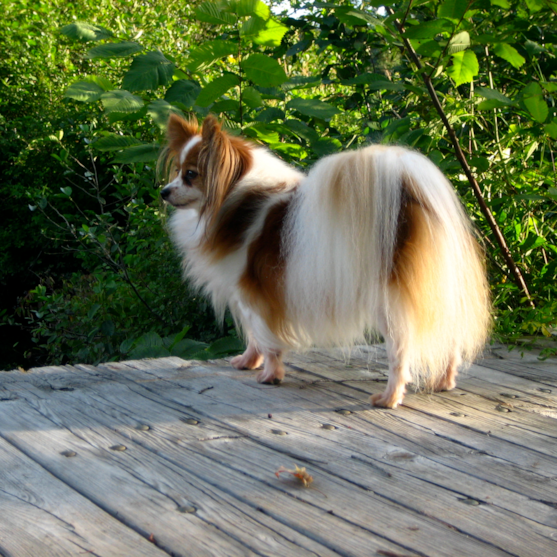Pomeranian Breed Information


The Pomeranian is a tiny powerhouse packed into a puff of fur—bold, bright, and unmistakably confident. Known for its foxlike face, lively gait, and thick double coat, this breed has been charming people for centuries, often winning hearts with both looks and attitude. Though small in size, the Pomeranian carries the heart of a lion and the presence of a dog three times its stature.
Weighing in at just 3 to 7 pounds, Pomeranians fall into the toy dog category, but their personalities go far beyond dainty. They are curious, expressive, and deeply loyal—always ready to bark out their opinions or shadow their favorite human around the house. This is a breed that craves interaction and thrives on being part of the daily buzz.
Despite their size, they’re anything but passive. Poms are alert and assertive, often acting like little watchdogs with a sharp eye for anything out of the ordinary. They’re also extremely intelligent, with a knack for picking up routines and learning tricks when training is approached with consistency and a sense of fun.
One of the standout features of the Pomeranian dog breed is its plush, voluminous coat that gives the breed its signature “fluffy” silhouette. That glorious fur, paired with an expressive face and upright ears, gives the Pomeranian a distinct look that’s instantly recognizable—and adored around the world.
Adaptable and entertaining, Pomeranians do well in apartments and smaller homes, provided they receive plenty of attention and engagement. They’re the kind of dog that likes to be where the action is, keeping tabs on their family and making their presence known with a cheerful bark or an eager trot.
Whether perched on a lap, prancing around the living room, or standing at the window on alert, the Pomeranian is always engaged—and always a little bit extra.
Characteristics
- Fearlessly bold – Pomeranians carry themselves with surprising confidence. They’re not shy about letting their voices be heard or stepping into the spotlight.
- Highly alert – Their keen senses make them excellent little watchdogs. They quickly pick up on new sights and sounds and are often the first to let you know when something’s changed.
- Full of energy – Though small, they have a surprising amount of pep. Many enjoy short bursts of play and are always ready for a quick game or adventure around the house.
- Extremely loyal – Pomeranians form deep bonds with their people. They often choose one or two family members to stick to like glue, following them from room to room.
- Expressive and vocal – These dogs love to “talk,” whether it’s through barking, whining, or just throwing you a knowing look. They’re communicators through and through.
- Clever and quick-thinking – Poms are smart, sometimes in mischievous ways. They’re known for finding creative solutions to simple problems—like figuring out how to reach a favorite toy or a treat left too high.
- Compact and adaptable – Their small size makes them well-suited to apartment life, but they adapt well to larger homes, too—as long as they feel involved.
- Social, but selective – They usually enjoy meeting people and other pets, but can be picky about who gets into their inner circle. Once you’re in, though, you’re in for life.
- Glamorous and confident – Their fluffy coats, bright eyes, and perky ears give them a striking presence. Most Poms seem to know just how cute they are—and enjoy showing it off.

Appearance
The Pomeranian is instantly recognizable—small in stature, yet bursting with style and expression. They have a bold silhouette, created in large part by their dramatic double coat that fluffs out from all angles. With a plume-like tail that arches over the back and a compact frame beneath all that fur, the Pomeranian looks like a miniature lion with the confidence to match.
Most Poms weigh between 3 and 7 pounds and stand 6 to 7 inches tall at the shoulder. They have a sturdy bone structure for their size, balanced by a refined neck and a short, straight back. Despite their classification as a toy dog breed, they’re solid and athletic under their fluff.
Their head is foxlike, with a short, tapered muzzle and bright, almond-shaped eyes that reflect sharp awareness and lively curiosity. The ears are small, triangular, and set high—always alert and giving them a slightly mischievous expression. The whole face is framed by a thick ruff of fur that enhances their proud, upright carriage.
Coat texture is one of the Pomeranian’s most admired features. The outer layer is long, straight, and coarse to the touch, while the undercoat is soft and dense, providing volume and insulation. Regular grooming helps maintain the shape and sheen of their iconic coat. A well-kept Pomeranian often looks freshly brushed, even on a casual afternoon walk.
Color is another area where Pomeranians shine. This breed comes in a wide range of shades—orange, black, white, cream, blue, sable, chocolate, red, and even merle. Some have markings or patterns that give them a signature look, adding even more variety to an already eye-catching breed.
Despite their small frame, Pomeranian dogs have a presence that fills a room. They carry themselves like they know they’re being watched—tail high, ears perked, and fur bouncing with every step.
Temperament
The Pomeranian may be tiny, but their personality is anything but small. Lively, opinionated, and full of flair, this breed thrives on attention and rarely blends into the background. They're confident by nature, often acting like they’re in charge—of the house, the routine, and occasionally, the people around them.
These dogs are known for being alert and sharp-witted. They notice everything—from the sound of your keys jangling to the rustle of a snack bag across the room. That attentiveness can make them vocal, especially when something feels out of the ordinary. A Pomeranian is often the first to raise the alarm, whether there’s a knock at the door or a bird outside the window.
At home, they’re affectionate and animated. Pomeranians love being the center of attention and will often entertain just to earn a reaction. Their energy, paired with their expressive faces, gives them a theatrical charm that never gets old. They bond strongly with their people and can be quite devoted—following you from room to room, curling up in your lap, and watching your every move with curious eyes.
Though they enjoy company, Pomeranians also have a bit of an independent streak. They don’t need to be in your arms all day and can enjoy their own space when they choose. That said, they do best when they’re not left alone for long stretches of time. They like being in the mix, whether it’s a casual conversation, an afternoon walk, or movie night on the couch.
Socialization plays a key role in shaping their behavior. With the right exposure early on, most Poms are friendly and outgoing, though they may remain a little reserved with strangers until they feel comfortable. They’re also known to be good with other pets when introduced gradually and respectfully.
The Pomeranian temperament blends spunk, loyalty, and cleverness into a dog that’s always engaging and never dull. They're full of surprises, endlessly charming, and impossible to ignore.
Care
Grooming
With a coat that looks straight out of a storybook, the Pomeranian is one of the most recognizable breeds in the world—but keeping that fluffy charm in top condition takes commitment. Their signature double coat, made up of a soft underlayer and a longer outer layer, needs regular care to stay healthy, tangle-free, and full of volume.
Most Pomeranians benefit from brushing at least three to four times per week. This helps prevent matting, especially around the ears, chest, armpits, and hindquarters where knots tend to form first. Daily brushing may be necessary during seasonal shedding periods, which typically happen twice a year.
Bathing is recommended every four to six weeks, or more frequently if your Pom gets into something messy. Use a gentle, dog-specific shampoo to protect their skin and maintain the coat’s natural texture. Follow-up with a light conditioner can help detangle and soften their thick fur.
Professional grooming is often part of a healthy routine for this breed. Every six to eight weeks, a visit to the groomer can help shape the coat, trim excess hair around the paws and sanitary areas, and maintain a neat outline without sacrificing that signature fluff.
Pomeranians are also prone to dental issues, so brushing their teeth regularly—ideally several times a week—can help prevent tartar buildup and gum disease. Nail trims should be done every few weeks to avoid overgrowth, and ears should be checked weekly for signs of irritation or buildup.
Exercise Needs
The Pomeranian may be small, but their energy can catch you off guard. These dogs are curious, quick-footed, and always on the lookout for the next bit of excitement. While they don’t need long hikes or high-intensity workouts, they do benefit from consistent, structured activity every day.
A solid routine for most Pomeranians includes 30 to 45 minutes of light exercise, broken up into shorter sessions. Morning and evening walks around the block, paired with indoor play, usually keep them satisfied. They especially enjoy chasing toys, exploring new corners of the yard, and performing for attention with a few tricks or games.
Because they’re naturally alert and a bit bossy, mental stimulation plays a big role in managing their energy. Simple puzzle toys, obedience practice, or learning a new command can do wonders in keeping them focused and calm indoors. Without an outlet, they may turn to barking, pacing, or other attention-seeking behaviors.
Although they can thrive in apartments and small homes, Pomeranians still need structure. They like to know when playtime happens and often get the zoomies when they’ve been still too long. Even a few laps around the living room with a favorite toy can recharge their spirits.
What makes Pomeranian exercise needs so manageable is their adaptability. They’re usually content with short walks and interactive time at home, as long as they’re not left idle for too long. They don’t require a yard—but they do require your attention.
Whether they’re trotting alongside you during your daily routine or darting around after a squeaky toy, a well-exercised Pomeranian is more content, better behaved, and even more fun to be around.
Health
For such a tiny breed, the Pomeranian packs a lot of durability. Generally, they’re considered a healthy and long-lived dog, with an average lifespan of 12 to 16 years. Still, like all breeds, they do come with a few health considerations that responsible owners should keep in mind.
Dental care tops the list. Because of their small mouths and closely packed teeth, Pomeranians are especially prone to plaque buildup, gum inflammation, and early tooth loss. A routine of regular tooth brushing, along with dental treats or vet-approved chews, helps keep their breath fresh and their mouth in good shape.
Another area to watch is their knees. Toy breeds like the Pomeranian are at higher risk for patellar luxation, a condition where the kneecap slips out of place. In most cases, this can be managed with weight control, joint supplements, or, in more severe situations, veterinary intervention.
Weight gain can creep up quickly if not monitored, so sticking to portioned meals and avoiding too many extra snacks helps prevent obesity, which can put extra strain on their joints and organs.
When bred responsibly and cared for thoughtfully, Pomeranian health is typically steady and manageable. Regular checkups, good nutrition, and a lifestyle that matches their size and needs will give most Poms the best chance at a long, lively life.
Lifespan
The Pomeranian is one of those breeds that seems to stick around for the long haul—both in spirit and in actual years. With an average lifespan of 12 to 16 years, these little dogs often stay sharp, spunky, and full of personality well into their senior stages.
Their small size contributes to their longevity, as toy breeds in general tend to outlive larger dogs. But living a long life isn’t just about size—it’s also about how they’re cared for along the way. A balanced diet, regular exercise, routine dental hygiene, and consistent vet checkups are all key pieces of the puzzle.
Many Pomeranians maintain their energy and curiosity well into their teens. Owners often remark that their Pom still acts like a puppy even at 10 or 12 years old. That said, it's common for them to slow down gradually and become more cuddly and settled as they age.
One of the best things you can do to support Pomeranian longevity is stay ahead of health concerns. Catching issues early—whether it’s joint stiffness, dental changes, or a shift in appetite—can make a big difference in how comfortably and happily they age.
While each dog is different, it’s not uncommon for a well-cared-for Pomeranian to reach 14 or even 17 years, particularly when they come from healthy breeding lines and grow up in a calm, attentive home.
Training
Training a Pomeranian is equal parts rewarding and amusing. These dogs are smart—sometimes a little too smart—and they learn quickly when there’s something in it for them. Whether it’s a tiny treat or your undivided attention, they know how to work the system and will often test the waters before falling into line.
They respond well to positive reinforcement and clear boundaries. Harsh correction doesn’t suit this breed—it either shuts them down or sparks defiance. A calm tone, patience, and consistency tend to go much farther. Most Poms thrive when they understand the routine and know exactly what’s expected.
Because of their alert nature, they can be prone to excessive barking if not gently guided early on. Teaching a “quiet” command, rewarding calm behavior, and keeping them mentally occupied helps prevent barking from turning into a habit.
Housebreaking can take a bit of time with this breed, mostly due to their small size and sensitive disposition. Puppy pads, crate training, and a tight schedule are helpful tools during the early months. Once the rhythm is set, most Pomeranians become clean and predictable in their habits.
They also enjoy learning tricks and commands—in fact, many enjoy performing. Sit, stay, spin, high five, and “speak” are just a few of the commands they often pick up quickly. Their sharp minds and desire to impress make them ideal candidates for short, fun training sessions that double as quality time.
Socialization is just as important as obedience. Exposing your Pom to new people, pets, and environments early on builds confidence and reduces skittishness or reactivity later in life. While naturally curious, they sometimes need a little help learning what’s safe and what’s not.
History
The Pomeranian may be one of the most beloved toy breeds today, but its roots trace back to much larger, hardier ancestors. The breed descends from ancient Spitz-type sled dogs—thick-coated, working dogs bred to withstand cold climates and perform heavy tasks like pulling sleds and guarding property. These Spitz ancestors originated in the Arctic and made their way to the region of Pomerania, located along the Baltic Sea in parts of present-day Poland and Germany.
The dogs bred in that region were smaller than their Arctic predecessors but still quite a bit larger than today’s Poms—often weighing around 20 to 30 pounds. They were primarily used as companion animals but retained the alertness, independence, and plush coat typical of Spitz breeds.
It wasn’t until the 18th and 19th centuries that the Pomeranian began to shrink in size and rise in popularity among European nobility. The most famous historical influence came from Queen Victoria of England, who fell in love with the breed during a trip to Florence, Italy, in the late 1800s. She brought a small red Pomeranian named Marco back to England, and his presence in the royal household sparked massive interest in smaller versions of the breed.
As breeders worked to miniaturize the Pomeranian, the dog’s popularity soared—especially in England and later in the United States. By the time the American Kennel Club recognized the breed in 1888, the Pomeranian had evolved into a true toy dog: compact, elegant, and full of personality.
Today, the Pomeranian’s history is reflected in its appearance and behavior. The thick coat, sharp mind, and alert instincts are all echoes of its working-dog ancestors, while its size and sparkle were shaped by generations of refinement for life as a companion. It’s a breed that carries centuries of development in its tiny frame—and it wears its legacy proudly.




